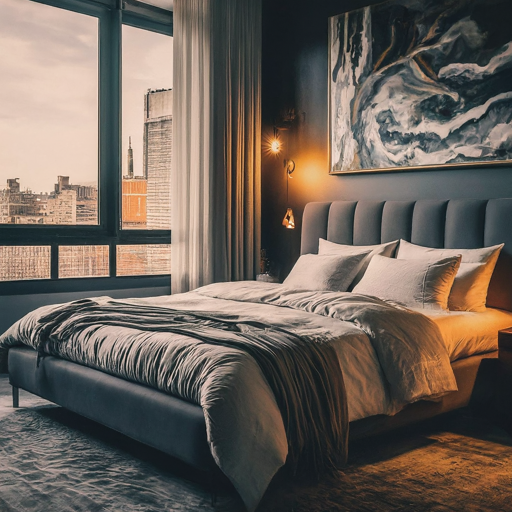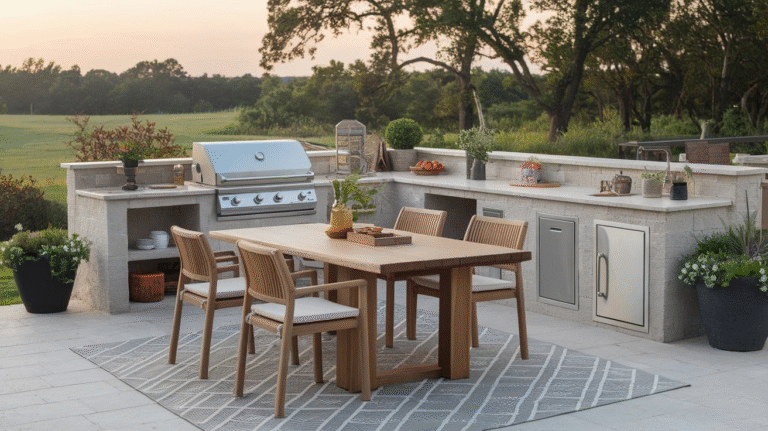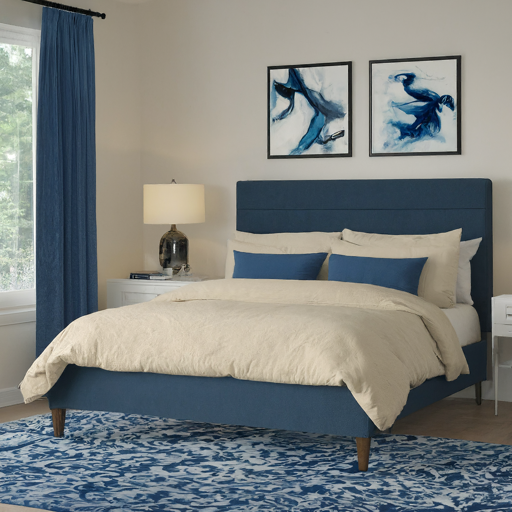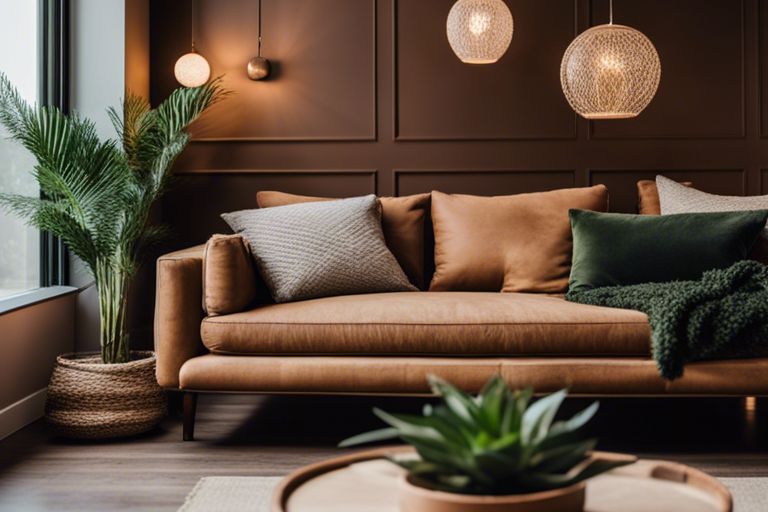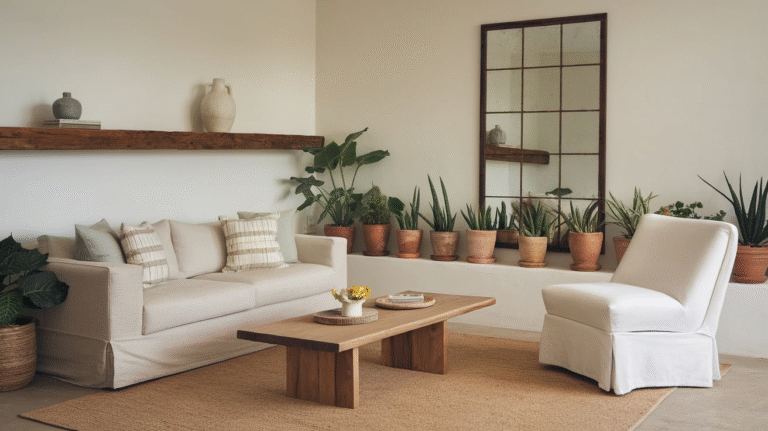25 Common Living Room Layout Mistakes (And How to Fix Them)

You can have the plushest sofa on the market, a chandelier worth drooling over, and a rug that could star in a magazine—yet your living room still feels off.
Sound familiar? That’s the trap of layout mistakes. Most of us don’t even know we’re making them.
But once you see them, you can’t unsee them. I’ve walked into hundreds of living rooms that screamed potential but whispered chaos.
So let’s roll up our sleeves and fix those layout mistakes that are silently sabotaging your space.
Here are 25 common living room layout blunders—and exactly how to fix them.
1. Furniture Pushed Against the Walls
It’s tempting. You want to make the room look bigger, so you line up the couch, chairs, and console like soldiers against the wall.
The result? A cold, echoey room with zero intimacy.
Fix it: Float your furniture. Pull your seating away from the walls, even just a few inches. Create a cozy island in the middle of the room.
Anchor it with a rug to ground the space. It’s counterintuitive, but it makes the room feel larger because now it has flow.
2. Ignoring Traffic Flow
You shouldn’t have to shimmy around a coffee table or hop over an ottoman just to sit down. Poor layout that blocks natural walking paths makes a room uncomfortable.
Fix it: Ensure at least 24-36 inches of walking space between furniture pieces. If you find yourself sidestepping chairs to get to the sofa, rethink placement. Test your layout by pretending you’re carrying a tray of drinks. Can you get around without spilling?
3. Rug That’s Too Small
This one’s a heartbreaker. A tiny rug in the middle of the room looks like a floating postage stamp. It disconnects furniture and makes everything feel shrunken.
Fix it: Your rug should be big enough for at least the front legs of all major furniture to sit on it. In large spaces, go bigger: all legs on the rug. A good size for most average living rooms is 8×10 feet or 9×12 feet.
4. Blocking Natural Light
That bulky bookcase right in front of the window? It’s robbing your room of free mood-boosting light. Sunlight is nature’s best decorator—don’t fight it.
Fix it: Rearrange to allow windows to breathe. Keep heavy furniture low or away from windows. Use light curtains or sheers that let light in. Your living room will feel brighter, happier, and more alive.
5. Overcrowding with Furniture
More isn’t always better. A living room that’s crammed with pieces can feel more like a storage unit than a relaxing retreat.
Fix it: Edit. Start with your biggest pieces, like the sofa and chairs, then build from there. If a piece isn’t serving comfort or function, lose it. Leave negative space—it gives the room room to breathe.
6. Poor TV Placement
TVs above fireplaces. TVs in corners. TVs that force you to crane your neck like a giraffe. The struggle is real.
Fix it: Ideally, the TV should be at eye level when seated, about 42 inches from the floor. If it must go above the fireplace, mount it with a tilting bracket. And measure the viewing distance: a 55-inch TV is best viewed from 6-9 feet away.
7. Awkward Focal Points
Sometimes the TV fights the fireplace, the gallery wall competes with the view, and your eyes don’t know where to land. That’s layout confusion 101.
Fix it: Choose one primary focal point—TV, fireplace, art, or window. Arrange furniture to honor that. If you have two, try blending them. Mount the TV above the fireplace (carefully) or flank artwork beside it to share the spotlight.
8. One Lighting Source
A single overhead light creates harsh shadows and doesn’t cut it, especially at night. It flattens the room and kills the vibe.
Fix it: Layer your lighting. Combine ambient (ceiling), task (reading lamps), and accent (sconces or candles). A good rule: three light sources per room, minimum. Mix lamp heights for depth and warmth.
9. Coffee Table Out of Reach
If you can’t set your drink down without leaning forward like you’re in yoga class, your coffee table is too far.
Fix it: Your coffee table should be 14-18 inches away from the sofa—close enough to reach, far enough to walk through. Also, it should be about the same height as your seat cushions, or slightly lower.
10. Forgetting About Conversation
Living rooms aren’t movie theaters. If everyone’s angled toward the screen and no one can see each other’s faces, the layout kills interaction.
Fix it: Arrange seating to promote face-to-face conversation. Form a U-shape or circle with sofas and chairs. Even swiveling armchairs can help you pivot between TV time and chats.
11. Furniture Too Big for the Room
That massive sectional you fell in love with at the showroom? It might be swallowing your space whole.
Fix it: Measure before buying. Leave at least 18 inches between pieces, and 3 feet around pathways. In small rooms, consider apartment-sized furniture or modular pieces that fit your square footage.
12. Furniture Too Small for the Room
On the flip side, too-small furniture can look like dollhouse decor in a large space. It throws off scale and looks unintentional.
Fix it: Use larger pieces in bigger rooms to create presence. Add height with tall lamps or vertical art. A sectional or large rug can visually anchor a large space.
13. Cluttered Corners
That unused chair, stack of magazines, and dying plant in the corner? That’s clutter, not decor.
Fix it: Corners are powerful. Turn them into cozy reading nooks, plant sanctuaries, or even mini bar carts. Keep them intentional. Give each corner a job.
14. Ignoring Vertical Space
All the action is at knee level while your walls sit bare and lonely. It makes a room feel flat.
Fix it: Think vertical. Tall bookcases, wall-mounted shelves, floor-to-ceiling curtains, and large-scale art draw the eye up and add balance. Embrace your room’s height.
15. Lack of Zones in Large Rooms
Open-concept living rooms can feel like furniture is floating in a void.
Fix it: Define zones. Use rugs, lighting, and furniture arrangement to create mini-areas—one for lounging, one for reading, maybe one for games. It adds structure and intimacy to big rooms.
16. Overdecorating Every Surface
Every table doesn’t need a tray, a bowl, a candle, a sculpture, and a vase. Your eye needs somewhere to rest.
Fix it: Practice visual hierarchy. Leave some surfaces clear. Use groupings of 3 items, varying in height. Think: one tall vase, one mid-sized bowl, one low book. Curate, don’t clutter.
17. Everything Matching
Matchy-matchy sofas, lamps, pillows, and art = showroom look. It feels safe but lacks personality.
Fix it: Mix textures, styles, and eras. Pair a vintage coffee table with a modern sofa. Combine velvet, leather, wood, and linen. Let your living room tell your story, not a catalog’s.
18. Not Measuring Properly
Guessing furniture sizes leads to costly mistakes. An inch too long or short can throw off everything.
Fix it: Before buying, sketch a floor plan, use painter’s tape on the floor to test dimensions, and measure multiple times. Apps like MagicPlan or Room Planner can help you visualize scale.
19. Disconnected Layout in Open Floor Plans
When your living room blends into the kitchen and dining, lack of cohesion causes visual chaos.
Fix it: Use a consistent color palette across zones. Anchor the living space with a rug, pendant lighting, or a sectional that subtly divides the area. Let each zone speak, but in the same language.
20. Blocking Doorways
It’s a classic: a chair shoved too close to the entryway, making guests shimmy sideways.
Fix it: Keep doorways clear by at least 3 feet. If your room is small, consider armless chairs or slim benches near the door to keep things open.
21. Ignoring the Ceiling
Ceilings are the fifth wall, but most of us forget about them. A bare ceiling can make the room feel boxy.
Fix it: Add interest with crown molding, ceiling medallions, wood beams, or even subtle paint (think: pale blue or soft blush). Light fixtures also help draw attention up.
22. Skipping a Focal Wall
A living room with all four walls treated equally often lacks depth.
Fix it: Highlight one wall with wallpaper, a bold paint color, or statement art. Make it the hero of the space and let everything else support it.
23. Forgetting About Flexibility
A layout that doesn’t evolve with your needs gets stale fast. Hosting game night? Watching movies? Hosting Grandma?
Fix it: Use lightweight chairs, movable poufs, and nesting tables. Consider modular furniture that adapts to the occasion. Make rearranging easy.
24. Bad Proportions Between Furniture and Accessories
Tiny lamps on a huge console, or a giant mirror over a dainty sideboard—it all feels off.
Fix it: Match scale and proportion. Large sofa? Big art. Tall shelves? Oversized vases. Balance is about relationships between objects, not size alone.
25. Not Reflecting Your Personality
A living room should feel like you—not a copy of what’s trending on Instagram.
Fix it: Display personal photos, travel souvenirs, books you love, and pieces with stories. When your space reflects you, it naturally feels right.
Final Thoughts
I’ve seen countless living rooms transformed just by tweaking layouts. It’s rarely about buying more stuff—it’s about placing what you already have with intention. Fixing layout mistakes can instantly turn your living room into a place that feels like home.
Let your space evolve with your life. Move that sofa. Rotate that chair. Edit that cluttered corner. And above all, trust your gut. If something feels off, it probably is.
And hey, if you’ve made one—or ten—of these mistakes, you’re not alone. I’ve committed most of them myself. (Let’s just say my TV used to hang above a fireplace so high I needed binoculars.)
Now? I measure. I float my furniture. I leave breathing room.

